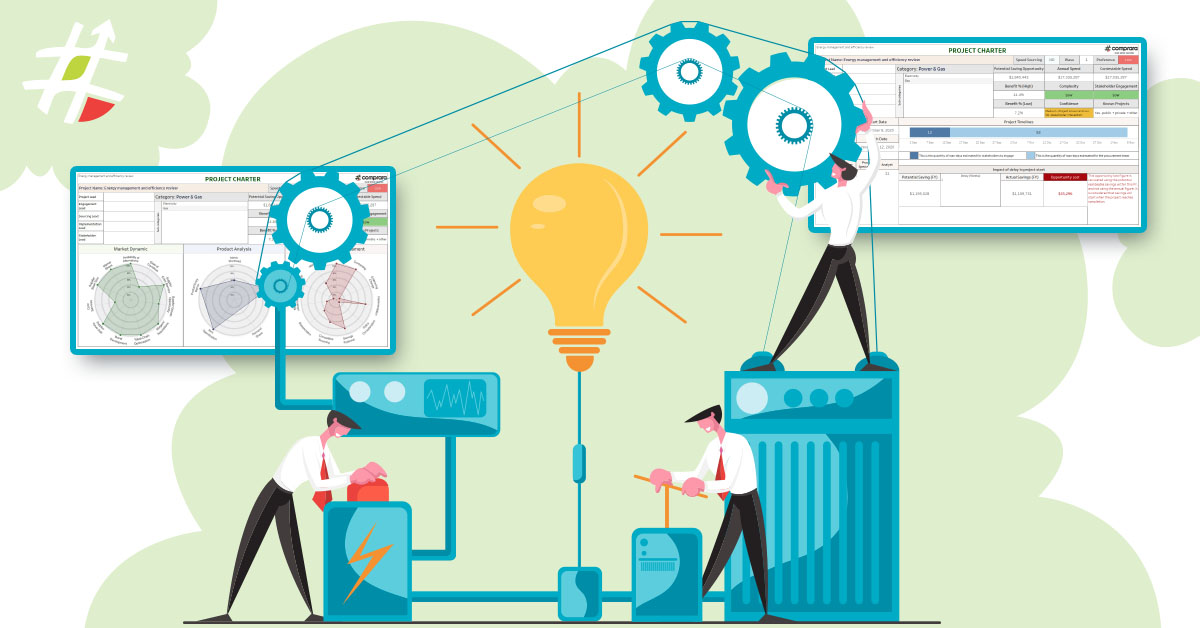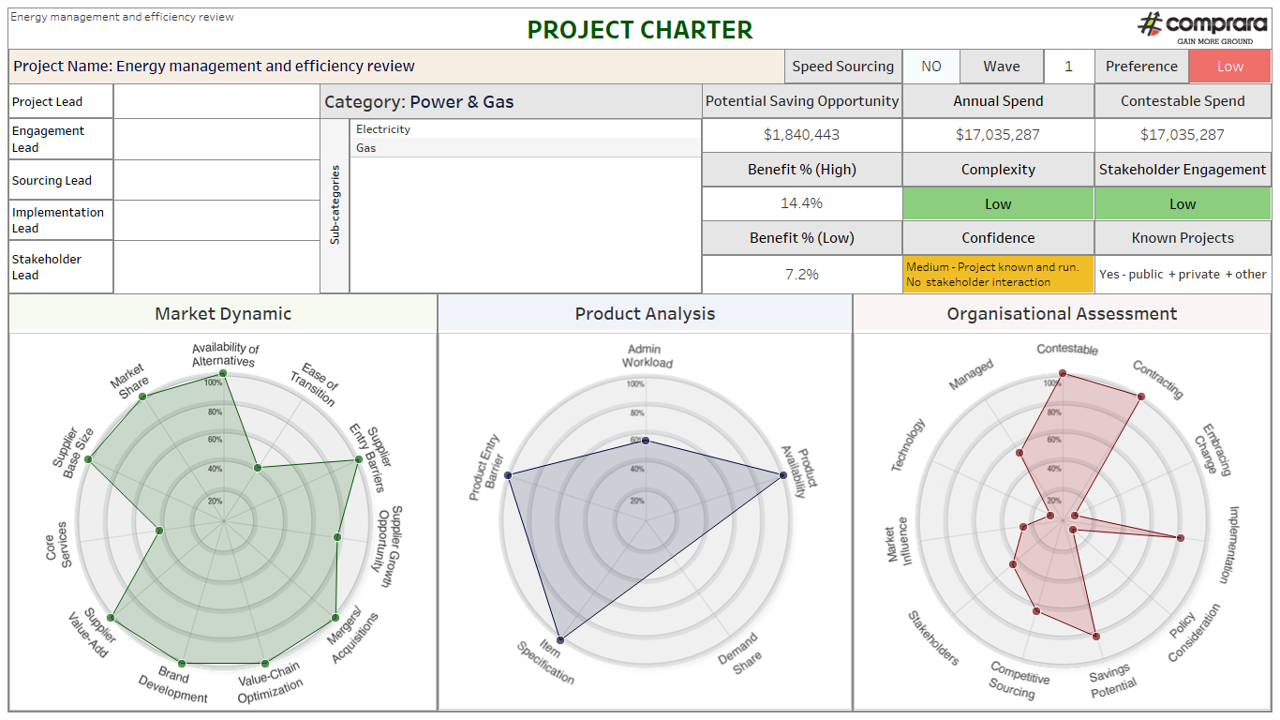
Effective procurement is a journey. From spend analysis and data categorisation through to compliance, contract management and opportunity analysis, there are stations along the way where we can stop, get off and use what we’ve learned up to that point.
But if you want to put into action every scrap of knowledge that’s been gleaned along the way, transform core aspects of your business and bring stakeholders along for the ride, then the final destination is Project Charters.
What is a Project Charter?
To this point on the Data Suite journey, we’ve already learned a lot about your organisation. We’ve captured your spend, determined how standardised your process is, and plugged any compliance-related leaks. We’ve also segmented your suppliers and determined how core they are to your business. From this, we’ve suggested several procurement levers that can be pulled to optimise particular categories, and told you how easy these transformations are to implement.
The final stage is enacting these category transformations, and that’s precisely what a Project Charter is.
Based on how beneficial the transformation is, as well as its ease of implementation, the client selects the categories to optimise, and a Project Charter is developed for each one.
ProcureTRAK’s Project Charter dashboards
Project Charter Summary

Here, all the possible projects are listed, as well as detailed data on each one, such as:
- complexity, based on a range of factors;
- level of stakeholder engagement;
- annual and financial year savings;
- lost savings caused by delay, down to the day and dollar amount; and
- length of time to complete, which is a combination of days needed to consult stakeholders and days needed to complete the actual project.
This dashboard is incredibly useful for giving a snapshot of the possible paths open to an organisation. At a glance, category managers can identify the projects that offer the biggest savings in the shortest time with the least complexity (or, more likely, the ones with the most appealing combination of these three features).
Individual Project dashboards

Once a project has been decided upon, the next three dashboards taker a deeper dive into them individually. The data presented is extensive and specific, giving all involved a clear idea of what to expect and what they’re getting into. On top of the information contained in the Project Charter Summary dashboard, we have:
- Confidence – a measurement of the category manager’s confidence in being able to execute the project, based on – among other things – experience with the levers involved.
- A clear layout of key protagonists, including the Project Lead, Engagement Lead, Sourcing Lead, Implementation Lead and Stakeholder Lead.
- Project Vision – a summation of what the project sets out to achieve and what it involves.
- Known Risks/Issues – a summation of the risks and issues the category manager believes are at play.
- Total man days the project will take, broken down by Director, Manager, Porject Specialist and Analysit.
A Project Charter arms you with the data
Category managers reading this blog would be forgiven for feeling a little giddy with excitement – and for one particular reason.
Category managers have only minutes to present their case to CFOs and CEOs; they can’t waste a word, they can’t “get back to you with that answer”, and they can’t be anything but compelling.
Our Project Charters are automatically converted into reports that clearly spell out what the project intends to achieve, the savings it can create, how it will do so and the time it will take. When trying to convince the C-suite, this document is invaluable, particularly when it details how much many dollars are lost for every day it’s delayed. It’s puts the data directly in their hands.
Basically, the Project Charter report makes it hard for the C-suite to deny the merits of a project.
Take the final – and most transformative – step with ProcureTRAK’s Project Charters
It’s the culmination of rigorous data mining and extensive surveys. Project Charters give you the opportunity to take advantage of all the work that’s gone before and transform it into real-world savings and category optimisation.
Get in touch with the team at PI Data Analytics and take your procurement function to the next level.
Get Procurement Insights That Matter
Join 10,000+ procurement professionals getting monthly expert cost-optimisation strategies and exclusive resources. Unsubscribe anytime.
Join








